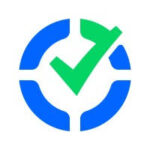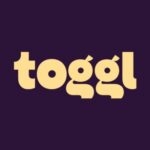Article
Time Doctor vs Toggl Track: Which Time-Tracking Tool Fits Your Team Best
SmallBizCRM Staff – September 12th, 2025
 When it comes to managing productivity, accurate time tracking can make all the difference for both individuals and teams. Whether you’re a freelancer juggling multiple clients or a manager overseeing remote employees, choosing the right tool is essential for balancing accountability, efficiency, and trust. Two leading contenders, Time Doctor and Toggl Track, approach this challenge from very different angles. One emphasizes detailed monitoring and productivity insights, while the other focuses on simplicity, flexibility, and user-friendly design. In this comparison, we explore their features, strengths, and trade-offs to help you determine which is the best fit.
When it comes to managing productivity, accurate time tracking can make all the difference for both individuals and teams. Whether you’re a freelancer juggling multiple clients or a manager overseeing remote employees, choosing the right tool is essential for balancing accountability, efficiency, and trust. Two leading contenders, Time Doctor and Toggl Track, approach this challenge from very different angles. One emphasizes detailed monitoring and productivity insights, while the other focuses on simplicity, flexibility, and user-friendly design. In this comparison, we explore their features, strengths, and trade-offs to help you determine which is the best fit.
What Each Tool Offers — Overview
Time Doctor is a robust, productivity-focused time and attendance tool that goes beyond mere time tracking. It includes features such as app & website usage monitoring, screenshots and screen recordings, idle-time tracking, distraction alerts, detailed productivity and work-life balance reporting.
Toggl Track, in contrast, emphasizes ease of use, flexibility, and less intrusive methods of tracking. Key features include a timer or manual entries, offline mode, calendar integration (Google/Outlook), many integrations with other tools, project/task breakdowns, flexible reporting of profitability, billable rates, and strong cross-platform support.
Feature Comparison
| Feature Area | Time Doctor | Toggl Track |
|---|---|---|
| Monitoring / Oversight | Strong. Includes app/website usage tracking, screenshots & screen recordings, idle-time/distraction alerts. Useful for managers wanting detailed visibility. | Lighter. No screenshots; background/app tracking is more optional/private. Emphasis is more on user control. |
| Time & Task Tracking | Both allow time by tasks/projects; Time Doctor adds features like automatic monitoring, manual time approval, trigger-based alerts. | Strong task & project breakdowns, with flexible switching between manual & timer modes, calendar view, offline mode. Easier task tagging & switching. |
| Reporting & Insights | Extensive. Productivity & usage reports; work-life balance dashboards; custom reports; alerts for idle time or underperformance. | Also very capable. Profitability per project/client/member, billable rates, filtered / grouped reports; scheduled reports; sharing & dashboards. |
| Integrations & Extensions | Good. Integrations with payroll tools, many third-party apps; supports offline time tracking; multiple platform support (desktop, web, mobile). | Very good. Over 100 integrations; browser extensions; API / webhooks; calendar sync; works across platforms. |
| Privacy & Intrusiveness | More intrusive tools included. The screenshot & app usage tracking can feel heavy, especially in more trust-focused or privacy-sensitive teams. | More privacy-friendly by design. Users control what is shared; background/offline modes; fewer “monitoring” features. |
| Usability & Learning Curve | Slightly steeper due to a large number of monitoring and reporting features. Managers may need to set up alert/notification policies. | Generally user-friendly. Intuitive timer / manual tracks. Strong design, minimal friction. Good especially for freelancers or small teams. |
| Pricing & Value | Multiple tiers with increasing features. More expensive as monitoring & advanced reports/screenshots etc. are included. | Has a free version; paid plans add advanced reporting, team features. Tends to give good value especially where you don’t need heavy monitoring. |
Pros & Cons — What Suits Which Kind of Team
 Time Doctor might be a better fit if:
Time Doctor might be a better fit if:
-
You need tight oversight or accountability (e.g. remote teams, contract workers, billing clients exactly).
-
You’re concerned about distractions, idle time, and want features like alerts or screenshots.
-
You want detailed analytics on employee usage, productivity, and possibly measure work-life balance.
-
Payroll / attendance integration is important.
Potential drawbacks with Time Doctor:
-
More intrusive monitoring may hurt employee morale or trust in some scenarios.
-
More features = more setup & management required.
-
Higher cost if you want all monitoring & reporting features.
-
Some mobile feature limitations or lack of GPS/geofencing in certain plans. Connecteam+1
 Toggl Track might be better if:
Toggl Track might be better if:
-
Ease of use, minimal friction, and flexibility are priorities.
-
You want to track projects, tasks, billable hours without heavy surveillance.
-
You have small/mid-size team or freelancers who value autonomy.
-
Budget-conscious: use of free plan or lower tiers is attractive.
-
Strong need for integrations and cross-device sync.
Potential drawbacks with Toggl Track:
-
Less suited if you require visual proof (screenshots, screen recordings).
-
Less focused on monitoring distractions or idle usage.
-
Some features like built-in payroll integrations or GPS/geofencing are missing or less mature.
If your organization prioritizes detailed productivity monitoring and you are comfortable trading off some level of privacy for accountability and oversight, Time Doctor is likely the more powerful option. On the other hand, if you want a tool that is lightweight, easy to adopt, privacy-aware, and still gives you solid project & task tracking plus reporting, Toggl Track is probably the better choice.
Your decision should also consider how your team feels about transparency & monitoring, what specific features you must have (screenshots? integration with payroll? offline mode?), and the total cost vs value for those features.